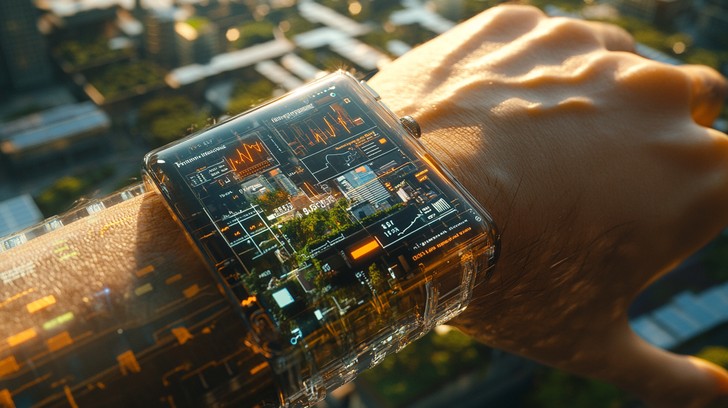
Managing blood sugar levels is a daily challenge for millions of people. Traditional glucose monitoring requires finger-pricks, sensors inserted under the skin, or continuous glucose monitors (CGMs) that still use invasive needles. But in 2025, a breakthrough technology is emerging — the non invasive blood glucose monitor.
This article explores how this new technology works, its accuracy, FDA warnings, and the latest wearable innovations shaping the future.
1. What Is a Non Invasive Blood Glucose Monitor?
A non invasive blood glucose monitor is a device that measures glucose levels without breaking the skin. Unlike CGM sensors that are inserted into the arm, these monitors use:
- Optical spectroscopy
- Near-infrared light
- Radio-frequency signals
- Bio-impedance
- Sweat or interstitial fluid analysis
- AI-powered prediction algorithms
This makes the process pain-free, needle-free, and potentially more accessible for millions of people with diabetes or prediabetes.
2. How Non Invasive Glucose Monitor Technology Works
Non invasive glucose monitor technology relies on advanced techniques that analyze your body without drawing blood. The most studied technologies include:
● Spectroscopy
Uses light wavelengths that penetrate the skin and measure glucose signatures in tissues.
● Near-Infrared (NIR) Sensors
A promising method in many prototypes — machines shine infrared light and analyze how glucose molecules absorb it.
● Radio-Frequency Measurements
Signals pass through tissues and detect glucose-related changes in electrical properties.
● Sweat and Skin Interstitial Fluid Analysis
Sensors interpret glucose through sweat composition without requiring insertion.
● Machine Learning (AI) Prediction
AI models combine optical data, skin temperature, heart rate, and electrical signals to estimate glucose levels.
Research Example:
A 2025 study showed that combining spectroscopy + AI can improve glucose prediction accuracy significantly.
(Source: arXiv research on non-invasive glucose prediction
3. Accuracy of Non Invasive Blood Glucose Monitors
Accuracy is the biggest challenge facing non-invasive glucose monitoring.
Why is accuracy still limited?
- Skin thickness varies between users
- Hydration and body temperature affect results
- Sweat composition changes throughout the day
- Optical readings are sensitive to ambient conditions
Many prototypes show promising but not yet medical-grade accuracy.
This is why companies are still in testing phases.
4. FDA Warnings and Safety Concerns
In early 2024–2025, the FDA issued warnings about smartwatches and rings that claim to measure blood glucose non-invasively, stating:
“No wrist-worn or wearable product has received FDA clearance for non-invasive glucose monitoring.”
This does not mean the technology is unsafe — it means:
✔ The data may not be accurate enough
✔ These devices should not replace medical-grade glucose monitoring
✔ Users should not make insulin decisions solely based on these readings
score :
U.S. Food & Drug Administration (FDA) warning
News Coverage on Reuters / APNews
5. Available Devices in 2025
While no fully-approved consumer device exists yet, several products are in advanced research or pre-market testing:
● Hagar Nano Sensor (Prototype)
Uses spectroscopy + nanotech.
● Know Labs UBAND
A wearable using Bio-RFID detecting glucose via radio frequencies.
● SugarBEAT Patch
A minimally invasive patch — much gentler than needle CGMs.
● Samsung & Apple R&D
Rumors point to non-invasive glucose detection in upcoming wearables.
Each device is progressing, but none are FDA-approved yet.
6. Wearable Non Invasive Glucose Monitoring Research
Recent academic research shows huge advances:
AI + Spectroscopy
Studies show accuracy improved by 20–45% using deep learning.
Skin-based Biosensors
Smart patches that analyze sweat molecules in real time.
Photonic Sensors
Tiny light modules embedded into watches or rings.
These breakthroughs make wearable non invasive glucose monitoring research the fastest-growing area in health tech today.

7. Future Trends and Market Growth
The Non-Invasive Glucose Monitoring Market is projected to reach billions of dollars within a few years.
Future trends include:
✔ Smartwatches with built-in glucose sensors
✔ Nanotech light-based glucose scanning
✔ Smart rings replacing CGM sensors
✔ AI analytics predicting glucose hours in advance
✔ Continuous glucose mapping
This technology could help:
– People with diabetes
– Prediabetic individuals
– Athletes tracking metabolic performance
– Biohackers
– Seniors
– Health-conscious users
8. Who Should Use These Devices?
Non invasive monitors are ideal for:
- Users who fear needles
- People seeking early glucose insights
- Anyone tracking metabolic health
- Seniors who need pain-free monitoring
- Fitness enthusiasts and biohackers
But important note:
They do not replace medical CGMs yet.
9. Final Thoughts
The non invasive blood glucose monitor is one of the most exciting breakthroughs in health technology. While accuracy is still developing, the combination of spectroscopy, AI, and advanced biosensors suggests that 2025–2027 will be transformative.
